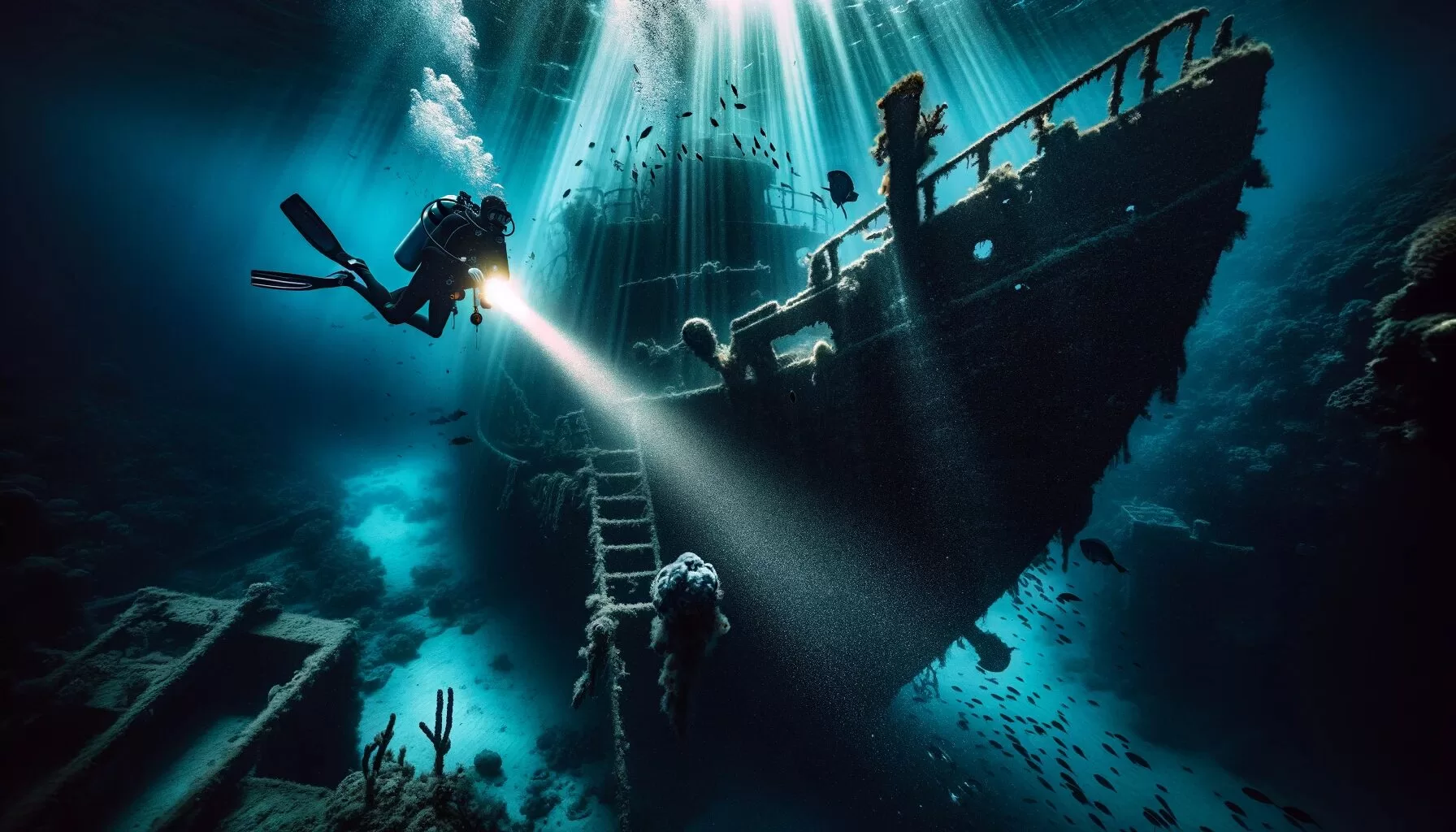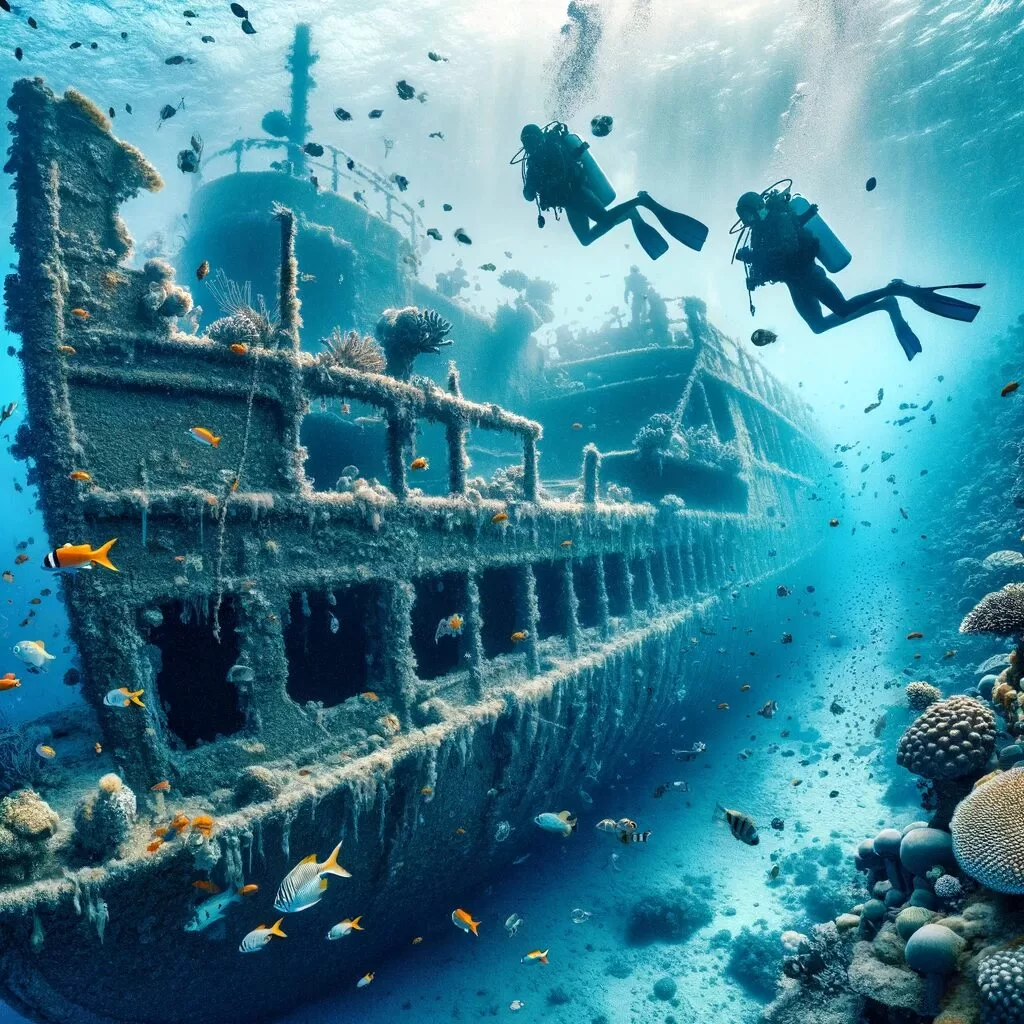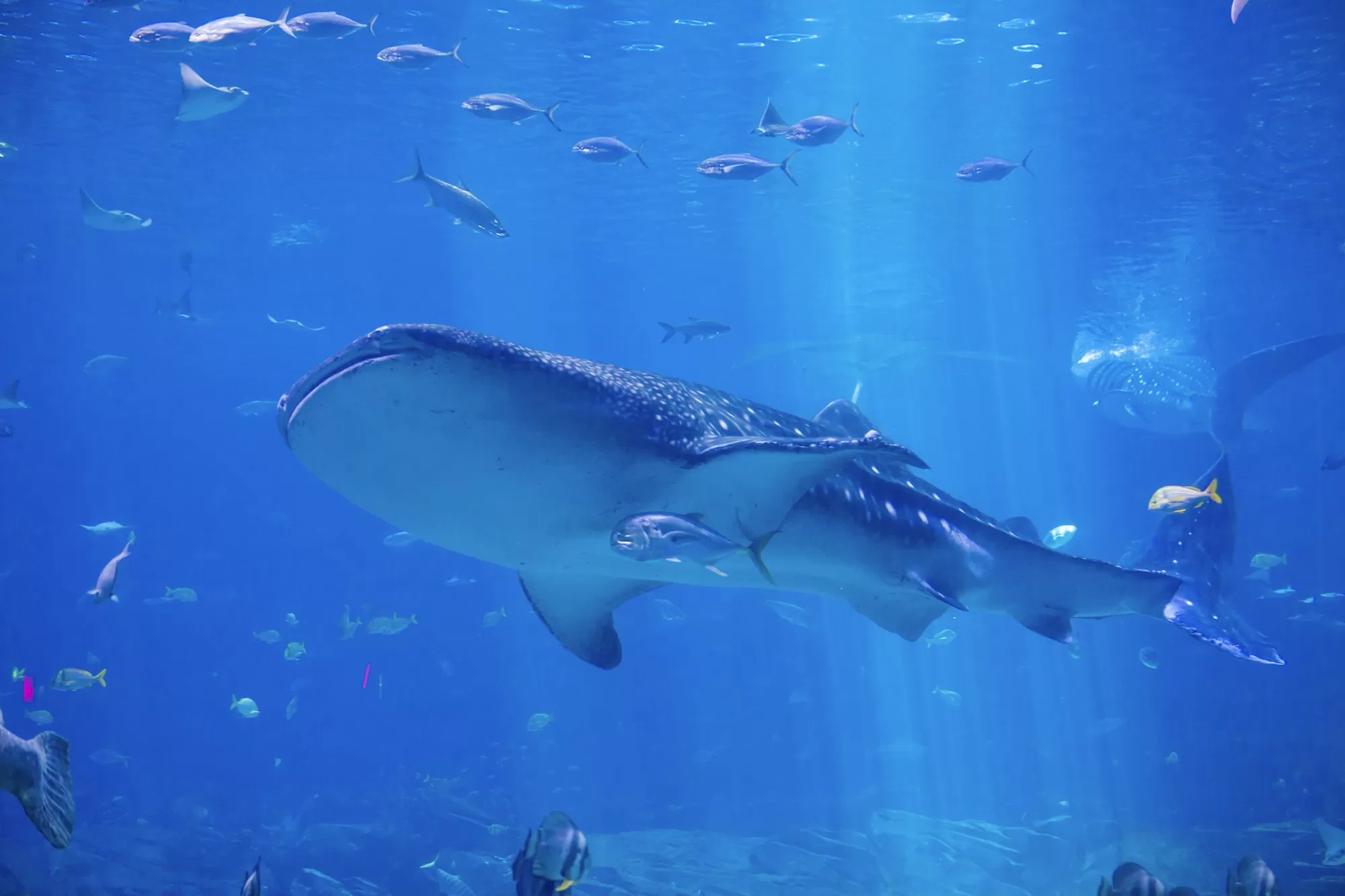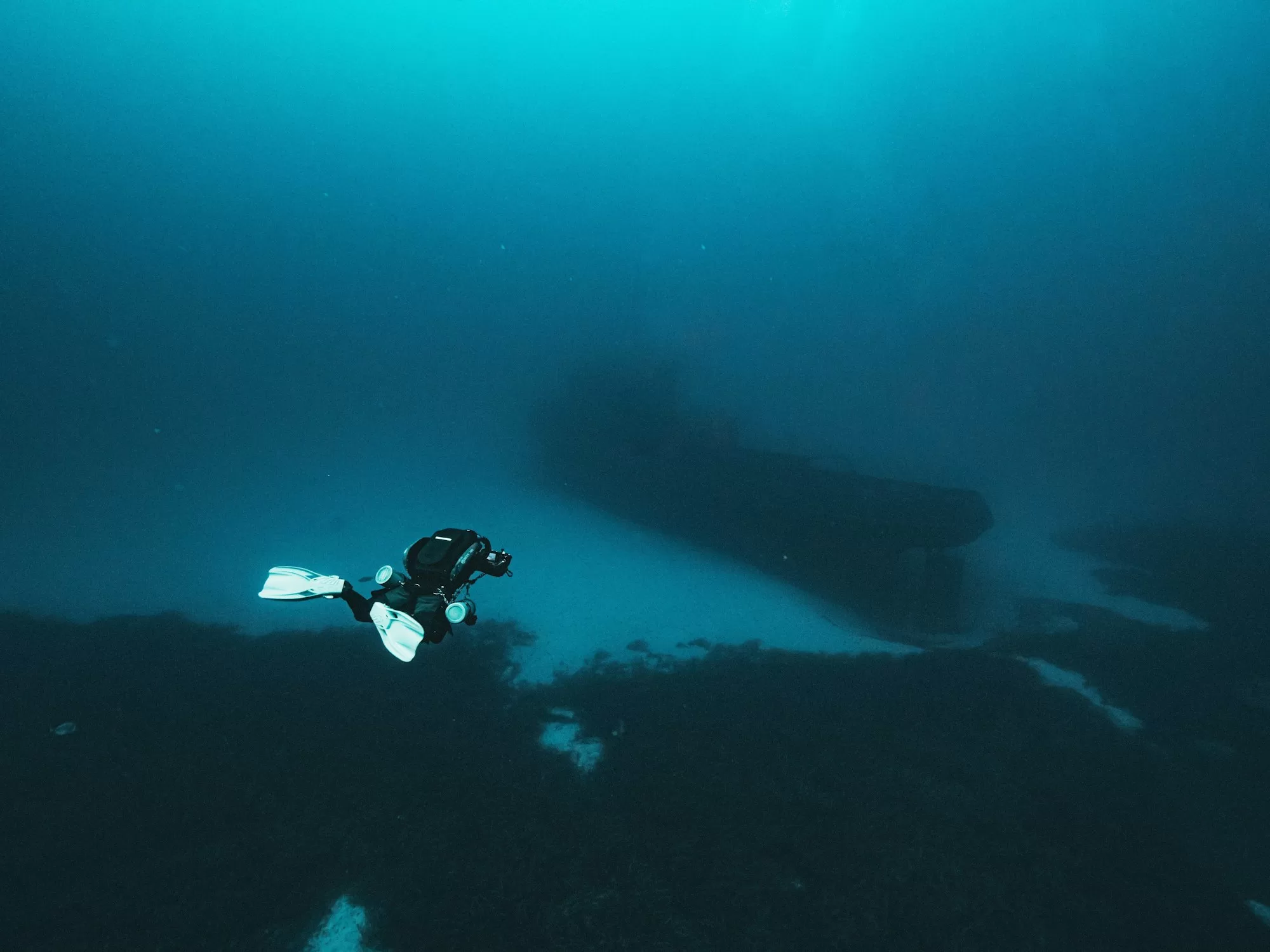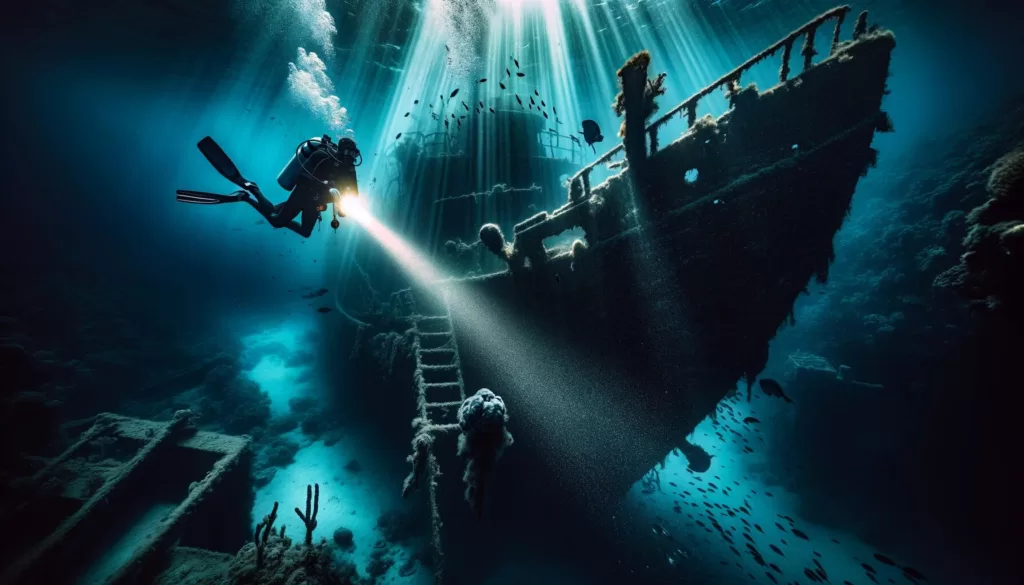
Introduction: Diving Into the Depths – The Lure of Shipwreck Exploration
Hey there, fellow underwater adventurers! Are you ready to take a plunge into the mysterious world of shipwrecks? Penetration diving – it’s not just a cool-sounding term; it’s an exhilarating journey into the heart of sunken vessels. Imagine gliding through the silent corridors of a once-bustling ship, now a playground for marine life and a capsule of history. But before you zip up that wetsuit and signal ‘okay’ to your dive buddy, let’s dive (pun intended!) into what makes penetration diving in shipwrecks a thrilling, yet challenging, endeavor.
What is Penetration Diving and its Thrill in Exploring Shipwrecks?
Diving into the heart of a shipwreck is like being an underwater Indiana Jones. There’s something undeniably thrilling about venturing into these submerged treasure troves. Penetration diving is your VIP pass to the hidden chambers and forgotten stories of these aquatic time capsules. It’s where the light of the sun fades, and the beam of your dive light becomes your guide through history’s sunken halls.
The true allure of shipwreck exploration lies in its blend of history, adventure, and the unexpected. As you navigate through the skeletal remains of a ship, every turn offers a new mystery. Will you find remnants of the vessel’s past life, or maybe a congregation of curious fish making the wreck their home? The anticipation of discovery keeps your heart racing and your eyes wide in awe.
Risks Associated with Penetration Diving in Shipwreck Environments
Now, let’s get real for a moment – penetration diving is not all about cool shipwreck selfies and high-fives with octopuses. This type of diving is like the roller coaster of the sea: thrilling, but not without its risks.
First up, we have disorientation – the underwater equivalent of trying to find your car in a multi-level parking lot, except it’s dark, and the cars are all upside down. Shipwrecks can be a labyrinth of twisted metal and narrow passageways, and it’s easy to get turned around. It’s like playing hide-and-seek, except you’re seeking the exit while managing your air supply.
Then, there’s the infamous silt-out. Imagine a cloud of underwater dust so thick you can’t see your own fins. Silt can reduce visibility to zero faster than you can say “Where’d everybody go?” It’s the underwater equivalent of being caught in a snowstorm, except you can’t just shake off the snowflakes.
And let’s not forget entanglement hazards. Shipwrecks can be adorned with the latest fashion in fishing lines and nets, waiting to give unsuspecting divers a big, tangly hug. It’s like walking through a spider web, but with higher stakes and less screaming (hopefully).
So, while diving into shipwrecks is undoubtedly an adventure, it’s one where you want to be as prepared as Batman going into a Gotham night.
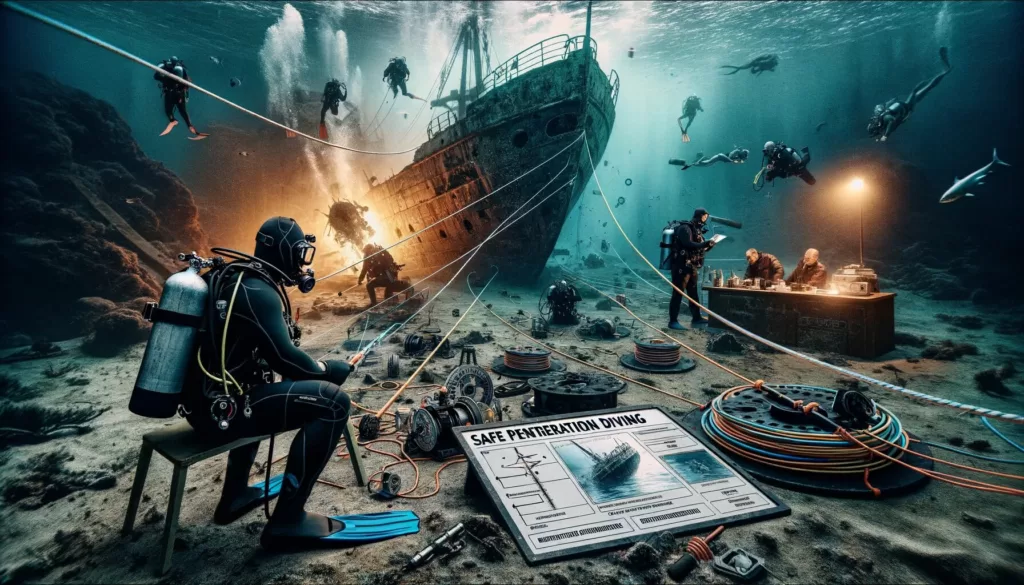
Training and Skills Required for Safe Penetration Diving
Okay, diving enthusiasts, it’s time to talk about getting schooled – literally. Before you can pretend to be the next aquatic Indiana Jones, you need the right training. Think of it as your Hogwarts letter for diving into the deep, dark depths of shipwrecks.
First off, you need to master the basics of scuba diving – because, let’s face it, flapping around like a fish out of water isn’t going to cut it. Once you’ve got that down, it’s time to level up to advanced wreck diving courses. These aren’t your average swim-in-the-park lessons; they’re the “learn how to navigate a haunted underwater maze” kind of deal.
You’ll learn the art of not getting lost (a.k.a. navigation), the elegance of not stirring up silt (a.k.a. buoyancy control), and the finesse of not getting tangled in unseen obstacles (a.k.a. line management). And, of course, there’s the ever-important skill of not running out of air – because, spoiler alert, gills are not included in your diving gear.
These courses aren’t just a series of boring lectures; they’re hands-on, in-water training sessions that will test your skills, nerves, and maybe even your sense of humor. By the end, you’ll be equipped not just with the knowledge, but also the confidence to safely navigate the ghostly corridors of sunken ships.
So, gear up, dive in, and learn all you can. After all, knowledge is power – especially when you’re 30 feet underwater, in a tight spot, trying to remember which way is up.
Preparation for Penetration Dive: Equipment and Planning Considerations
Alright, fellow deep-sea detectives, let’s talk gear – because when it comes to penetration diving, you can’t just wing it with a pair of goggles and good intentions. This is where your inner gadget geek meets your scuba spirit.
First and foremost, your dive light is your loyal sidekick – like Batman’s utility belt, but underwater. It’s not just for seeing where you’re going; it’s for signaling to your dive buddies when words just won’t do. Think of it as your underwater flashlight, spotlight, and SOS beacon all rolled into one.
Next up, the wreck reel – not to be confused with a fishing reel, though both involve unwinding and winding under pressure. This little gem is your breadcrumb trail back to the open water. Without it, you’re basically Hansel and Gretel, minus the candy house and with a lot more fish.
And let’s not forget the basics: your trusty BCD (Buoyancy Control Device), regulator, and fins. Plus, a cutting tool – because sometimes, you need to channel your inner 007 and make a quick escape from entanglements.
Now, onto planning. Penetration diving isn’t a spontaneous “let’s-see-where-this-hole-goes” kind of adventure. It’s more of a “plan, check, and double-check” affair. Know your entry and exit points, keep an eye on air supply, and always have a Plan B (and C, and maybe even D).
So, gear up, plan well, and remember: in penetration diving, it’s better to be a cautious tortoise than a reckless rabbit.
Best Practices for Maintaining Safety during a Penetration Dive
As we wrap up our underwater escapade, let’s not forget that the sea, much like a wise old sage, demands respect. Penetration diving is no joke, and safety is the name of the game. Here are some best practices to ensure your dive story has a happy ending:
- Teamwork Makes the Dream Work: Dive with buddies who know their stuff. It’s like having a squad of Aquamen and Women. Communication is key – hand signals are your underwater texting. Make sure everyone knows the plan and is ready to play their part.
- Follow the Yellow Brick Road: Or, in this case, the guideline. This little line isn’t just a decoration; it’s your ticket back to the real world. Treat it like your best friend – keep an eye on it and never let it go, especially in low visibility.
- Keep Calm and Dive On: If things get hairy, remember to keep your cool. Panic is about as useful as a chocolate teapot underwater. Maintain buoyancy, conserve air, and think before you act. And remember, there’s no shame in calling a dive if it feels off. The sea will always be there for another day.
- Know Your Limits: This isn’t the place for a “hold my beer and watch this” moment. Be honest about your skills and comfort level. Wrecks can be tempting, but they’re not worth risking your safety. It’s better to be a live chicken than a dead daredevil.
- Equipment Check – Twice: Treat your gear like a skydiver treats their parachute. Check it, double-check it, and then check it again. Your life literally depends on it.
By following these best practices, you’re not just ensuring a safe dive; you’re making sure the story of your underwater adventure is one of awe, not of cautionary tales. So dive smart, dive safe, and keep exploring the incredible world beneath the waves!
Conclusion
And there you have it, fellow sea wanderers – your guide to the thrilling world of penetration diving in shipwrecks. It’s a journey of discovery, adventure, and a hefty dose of respect for the power of the ocean. So gear up, train hard, dive safe, and immerse yourself in the silent stories of the deep. Who knows what secrets you’ll uncover in the watery depths of our planet’s final frontier?
